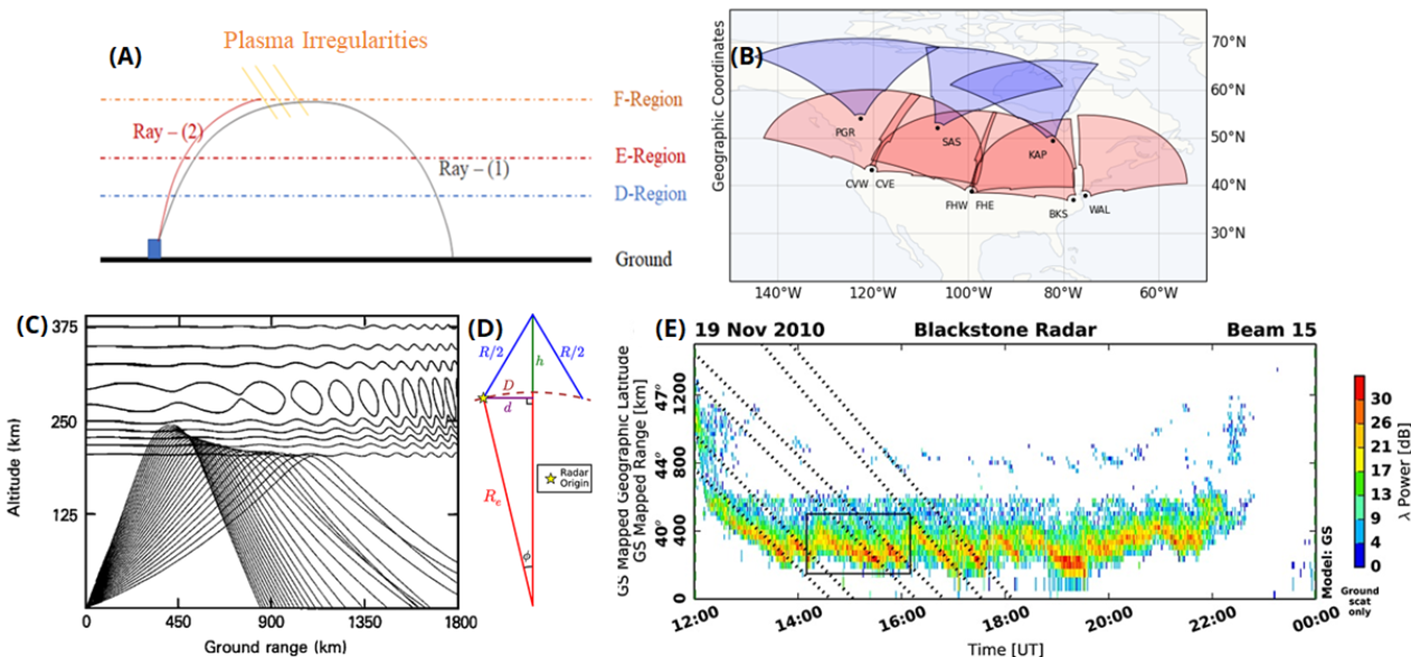AGW-driven impacts on HF
Ionospheric responses to acoustic and gravity waves on HF communication

This research focuses on investigating the influence of ionospheric disturbances generated by thunderstorms and snowstorms on High-Frequency (HF) communication systems utilizing SuperDARN radars. Employing the Provision of High-Frequency Raytracing Laboratory for Propagation Studies (PHaRLAP), a 3D raytracing tool, I aim to quantify alterations in the Maximum Usable Frequency (MUF). This assessment is crucial for understanding the impact of transient ionospheric irregularities induced by severe weather phenomena on HF radio wave propagation. The methodology involves utilizing observational data from SuperDARN radars, which are adept at capturing the dynamic behavior of the ionosphere during such meteorological events. The quantitative analysis of changes in MUF serves as a robust metric to assess the resilience and reliability of HF communication systems under the influence of natural atmospheric disturbances. This work contributes to the broader understanding of ionospheric effects on radio wave propagation, providing valuable insights for optimizing communication systems in adverse weather conditions1.
-
Co-I (Institutional PI) of NASA LWS Research Award ‘Ionospheric responses to thunderstorm-generated acoustic and gravity waves over the continental US’ [2022-2026] NNH21ZDA001N. ↩